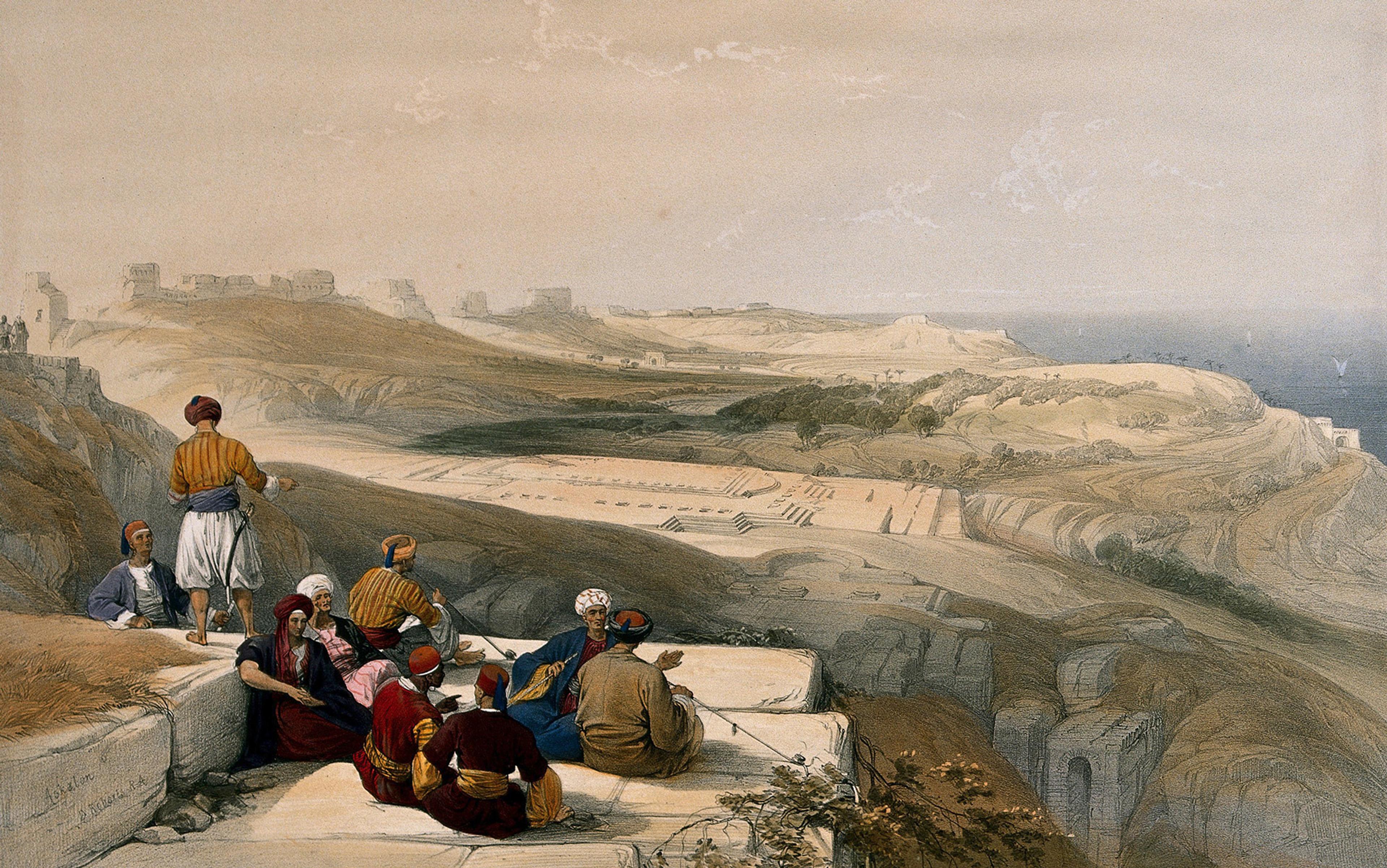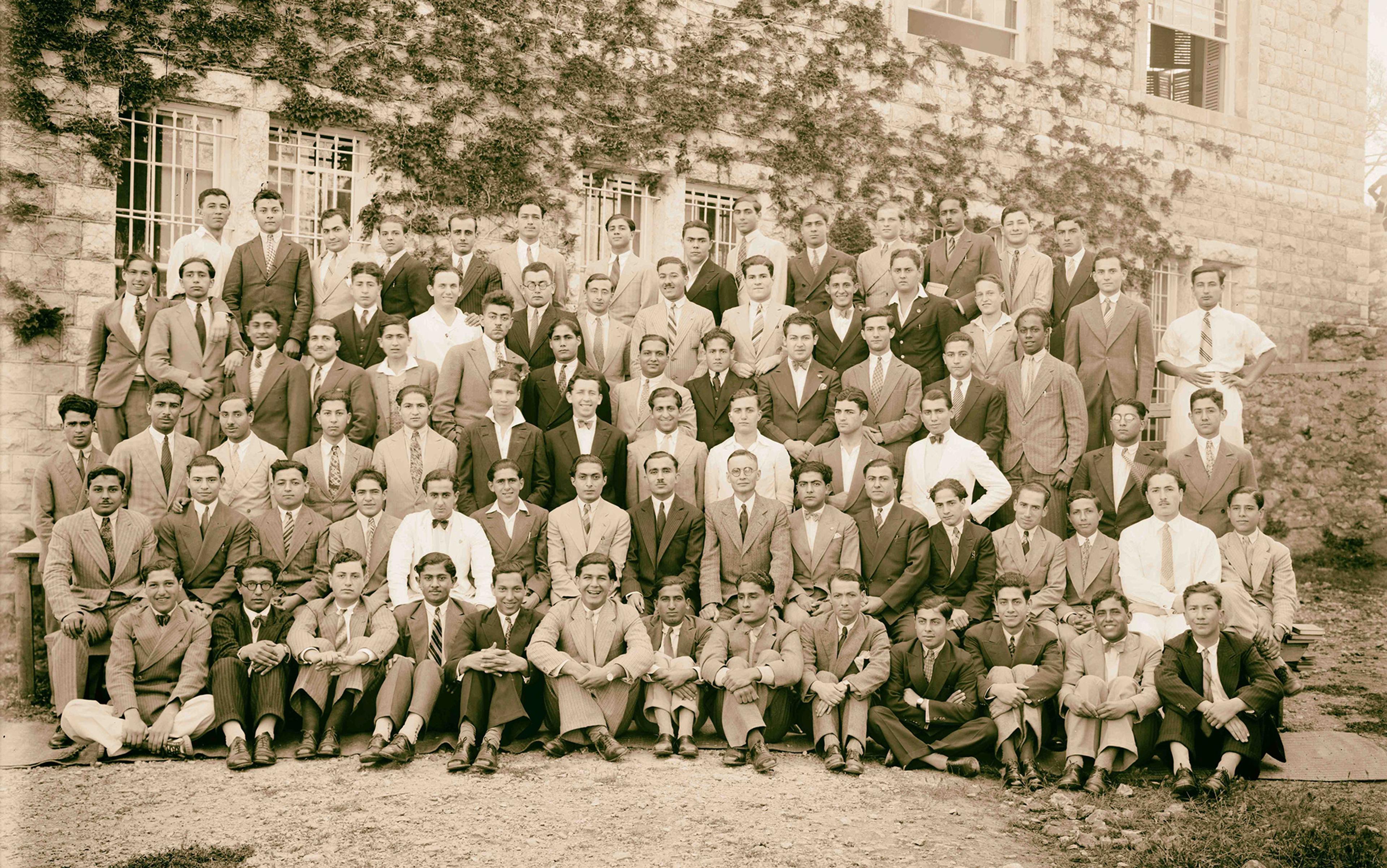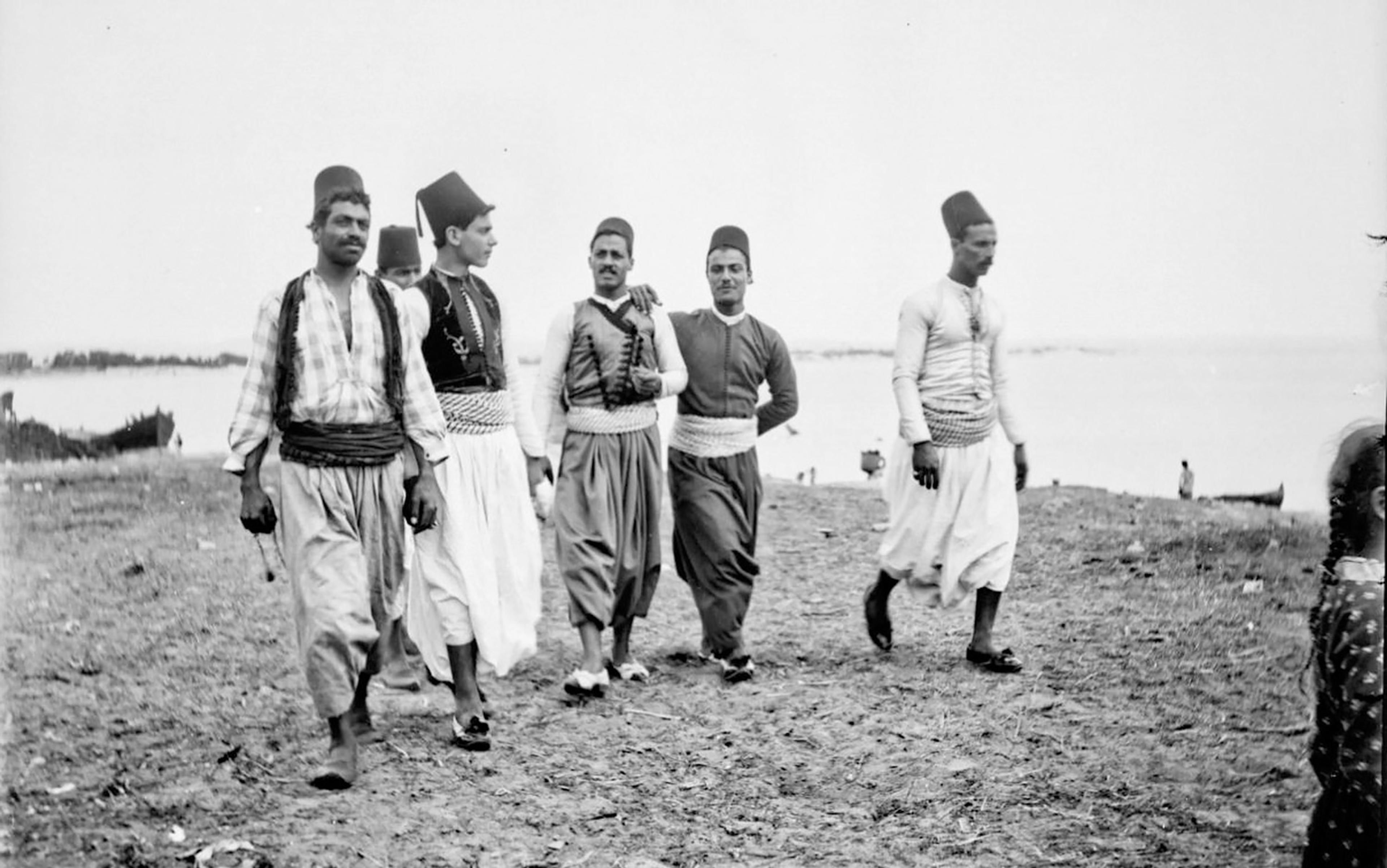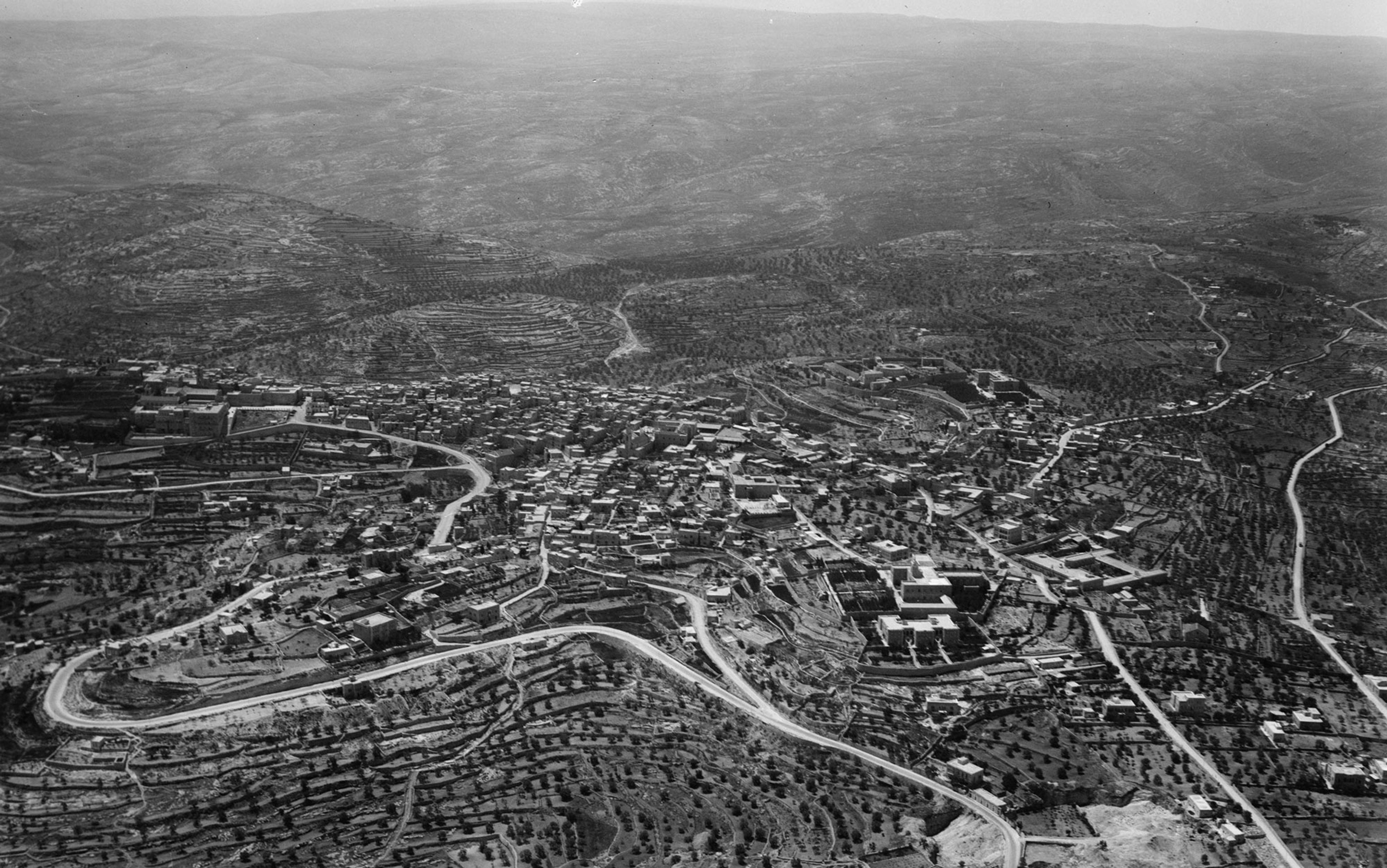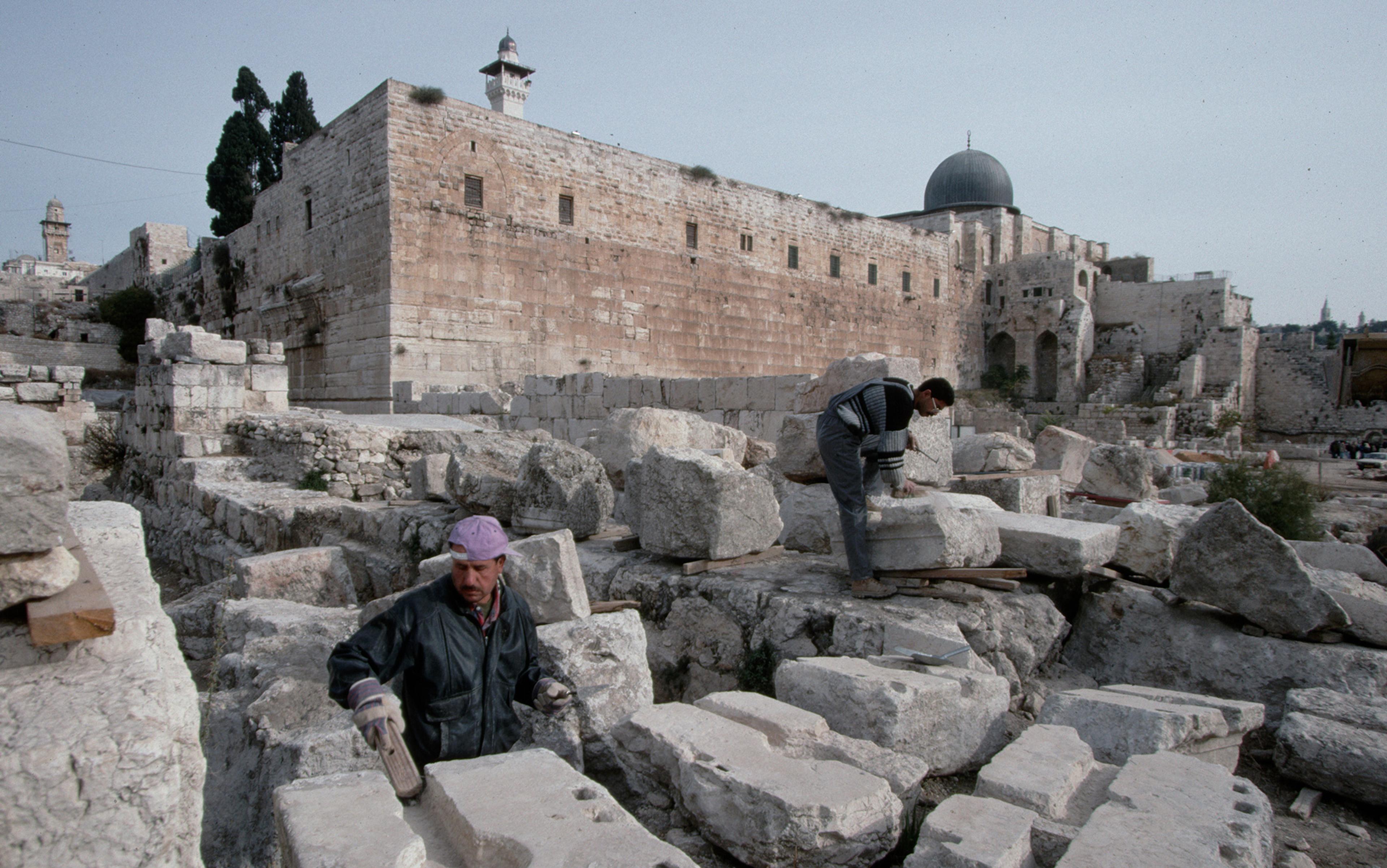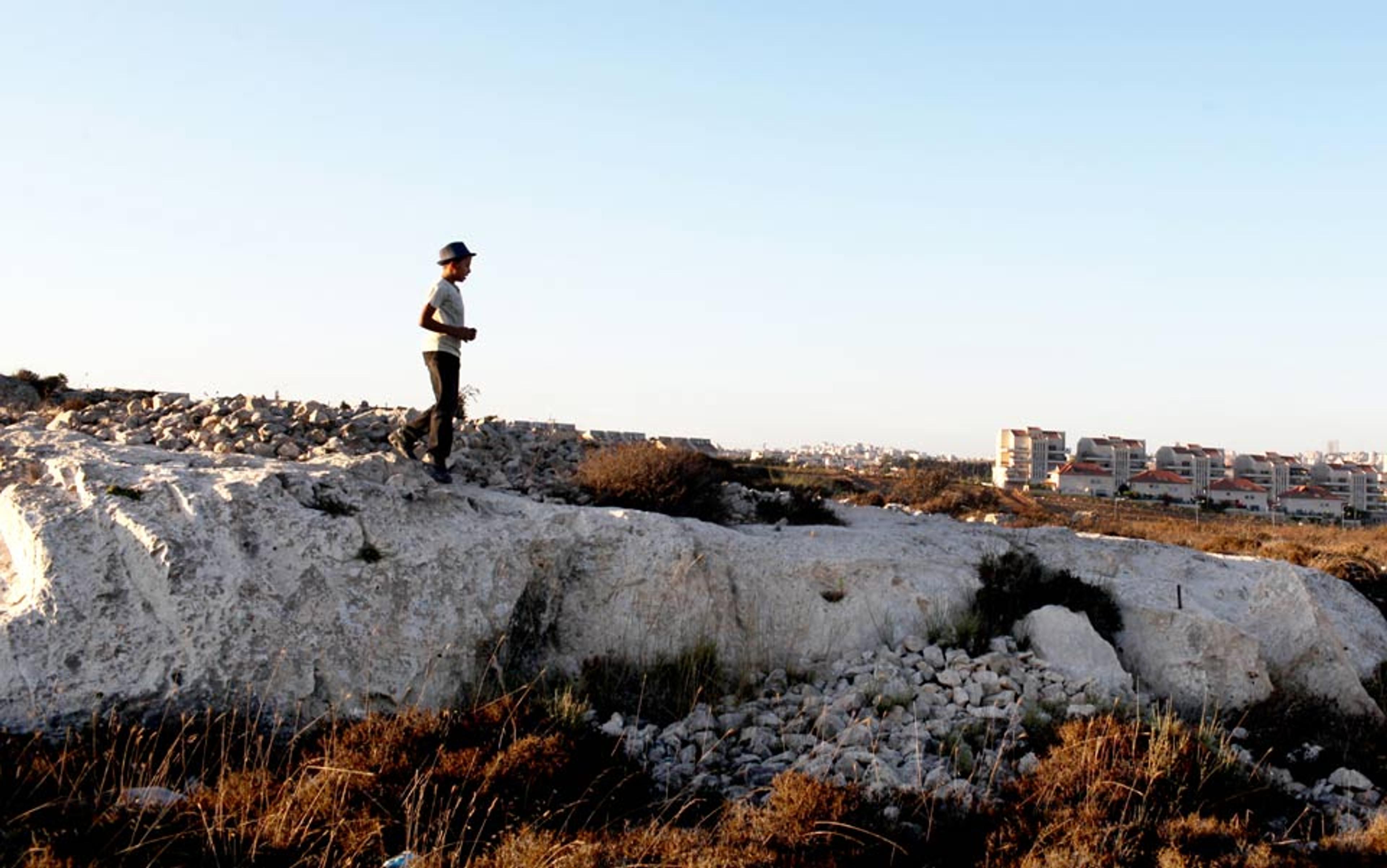The year was 1858 when Josias Leslie Porter, an Irish Presbyterian minister, travelled all across Palestine. Porter was making notes for one of the first modern travel guides to the country, to be published later that year by the London firm of John Murray. The John Murray guides, precursors to today’s well-known Blue Guides, were already famous. Ashkelon, the ancient seaport destroyed in the 13th century, was on the publisher’s itinerary. In Porter’s day, the historic city was farmland for Jura, an adjacent Arab village.
Porter climbed the earthen ramparts that had once served as Ashkelon’s defences. After reaching the top, he surveyed the verdant Palestinian countryside. Gardens covered most of the site, and Porter listed their rich produce: vines, pomegranates, figs, apricots, plus ‘luxuriant beds of onions and melons’. He enumerated the draft animals – ‘five yokes of oxen ploughing, two drawing water for irrigation’. He also counted a total of 28 people working in the fields. How did Porter sum up his impression of Ashkelon? ‘Such is one section of Ascalon. The remaining portion is even more terribly desolate.’
Porter’s conclusion is jarring. He described a scene of seemingly idyllic activity, fertility and productivity, and then summed it up as ‘desolate’. What accounts for this remarkable disjuncture? The short answer is: the Bible.
The book of Zephaniah (King James version) says: ‘For Gaza shall be forsaken, and Ashkelon a desolation …’ Indeed, reports of Ashkelon’s desolation suffuse 19th-century accounts of Palestine: in my survey of 30 accounts by scholars and other 19th-century travellers to Ashkelon, 18 described Ashkelon as ‘desolate’. Many of them – including Porter – explicitly quote or mention the passage from Zephaniah to augment their descriptions. Like many others, Porter is sure to note that no one lives within the walls of the former city, but that there is an Arab village right beside it. This, too, is seen as the fulfilment of a biblical prophecy: ‘Ashkelon shall not be inhabited.’
These accounts of 19th-century European and American visitors to Palestine hint at how profoundly the Bible has shaped the ways in which they saw the country. The Bible also influenced how they remembered Palestine and how they presented it to their audiences. The passage quoted above, juxtaposing Ashkelon’s bounty with a judgment of its ‘desolation’, is not from the original 1858 version of the John Murray guide. It comes from the revised edition 10 years later. In the original 1858 edition, Porter described Ashkelon not as ‘more terribly desolate’, but as ‘more terribly fallen’. In other words, Porter (or the publisher) edited the account in order to align it more closely with the words of biblical prophecy. A quarter-century after his journey to Ashkelon, Porter revisited it in his Illustrations of Bible Prophecy and History. Then, even further removed from his trip, he wrote that only ‘one small section’ of Ashkelon had ‘little gardens’, most of the site being covered with ‘hillocks of drifting sand’. In fact, 19th-century plans of the site (and, later, early aerial photographs) confirm Porter’s initial impressions that gardens and orchards spread over most of Ashkelon’s extent within the walls.
The impact of the biblical view goes even deeper than just individual sites. European and American visitors regularly described the entire country of Palestine as ‘desolate’ or ‘empty’ or ‘ruined’, descriptions that are sometimes simply hard to square with the facts. Palestine in the mid-19th century had a population of close to 400,000 people. This might seem small today, but consider it in context: it was, at the time, about the same as the populations of New Jersey or Connecticut, the two US states closest in size. True, Palestine was not as technologically advanced as western Europe or the US. The country lacked wheeled vehicles, for example, and the roads were mostly dirt tracks. But dirt roads are a far cry from a desolate wasteland. Palestine’s many valleys and plains – ‘covered with fine fields of wheat’, as the pioneering American scholar Edward Robinson described them – were producing significant agricultural surpluses throughout the 19th century. Palestine even exported several types of grain, oranges, cotton and other agricultural products.
So all of this raises the question: desolate compared with what?
Again, we must turn to the formidable influence of the Bible on how Europeans and Americans saw Palestine. To begin with, even before these visitors arrived in Palestine, they harboured strong preconceptions, inherited from the Bible as well as from classical texts. Seen by Europeans and Americans as the foundations of Western civilisation, the Bible and the classics served to define the Western relationship to the lands of the East, especially Palestine, or the Holy Land. Travellers accepted with little question the hardly believable numbers of people given in these works: armies routinely numbered in the tens or hundreds of thousands. Likewise, scriptural sources reported populations – just for Israel or Judah, in the hill country of Palestine – in the millions.
Today, scholars think that these numbers were overstated by an order of magnitude. Westerners in the 19th century did not question scriptural descriptions of ‘a land flowing with milk and honey’. They interpreted biblical language in terms of their own surroundings. As an example, biblical texts are full of references to ‘forests’. Most readers from northern Europe or the United States naturally imagined northern European or American forests. They did not consider, or indeed know anything of, the natural Mediterranean environment and climate of Palestine. Old Master paintings and prints depicting biblical episodes such as the Crucifixion or other scenes in the life of Jesus reinforced these overly familiar imaginings of the Holy Land. Canonical European works of art routinely show architecture and landscape that resemble those of northern Europe, rather than the eastern Mediterranean. Raised on these false expectations of the Holy Land, it is less surprising that so many reported the land to be ‘desolate’, ‘empty’ and ‘ruined’. Quite simply, upon meeting a landscape so different from their strong expectations, they processed it through familiar texts – in this case, biblical prophecies of desolation.
In the 19th century, visitors’ expectations would have been further shaped by another factor – the accounts of earlier visitors. Travel accounts of Palestine and the East were a popular genre with European and American readers – especially with those undertaking their own journeys to the Holy Land. Decades and even centuries of reports of desolation and wasteland had an effect. Mark Twain might have been famous for showing Palestine as it was (instead of through the eyes of previous travellers), but by the time his satirical travelogue The Innocents Abroad (1869) was published, his desolate Palestine was a cliché of travel writing.
Importantly, seeing Palestine as declined from an imagined great and glorious past to (another imagined) desolate present helped visitors to stake a claim of ownership to the land. The idea that it had fallen into disrepair and desolation confirmed a longstanding orientalist stereotype of Middle Easterners as lazy, and of the Ottoman empire as decadent. European interpretations of biblical and classical texts further nourished these preconceptions. The desolate state of the land, under its Ottoman rulers and Arab inhabitants, contrasted with how much the land meant to European Christians. In their view, they knew more about its glorious past, and thus were its more rightful heirs.
For the Holy Land, this Western conceit was particularly visible in the work of the Palestine Exploration Fund (PEF). Founded in London in 1865, under the official patronage of Queen Victoria, it was the first of several organisations dedicated to the study of Palestine to arise in Western countries. The PEF explorer (and British army engineer) Charles Warren reported that the Arabs of Palestine expected the Europeans to take the country. In a pamphlet arguing for Jewish colonisation of Palestine, under the auspices of a proposed new British East India Company, Warren has the Arabs say: ‘Come you must, whether we like it or not.’ Once Britain decided that Palestine had sufficient strategic value, the PEF also produced a full-coverage map survey of Palestine, a task carried out by British Royal Engineers and coordinated with the British War Office.
The seemingly obvious decline of the land was proof that the relics of its past belonged to its Western heirs
But the PEF defies simple characterisation. It came together from a swirl of different interests and motivations, some imperialist, some religious – sometimes intertwining, sometimes competing. At the very first meeting of the PEF in 1865, the chair stated: ‘This country of Palestine belongs to you and to me, it is essentially ours.’ This apparently colonialist pronouncement actually came from the Archbishop of York, who made clear that he meant an ownership not imperial but religious:
It was given to the Father of Israel in the words: ‘Walk through the land in the length of it, and in the breadth of it, for I will give it unto thee.’ We mean to walk through Palestine in the length and in the breadth of it, because that land has been give unto us. It is the land from which comes the news of our Redemption.
Disregarding Ottoman antiquities law, the PEF – and travellers in general – routinely brought back ancient artifacts from Palestine (and elsewhere in the Middle East). Baedeker’s and other guidebooks of the period even gave helpful advice on flouting the law to effectively pilfer the country’s cultural patrimony. The seemingly obvious decline of the land (from an imagined great and glorious past to another imagined desolate present) amounted to visible, tangible proof that the relics of its past – if not the land itself – belonged to its Western heirs.
For most 19th-century visitors to Palestine, then, the decline seemed self-evident. It led to an obvious question: what caused it? Two major suspects presented themselves: natural causes (the climate had changed), and human ones (the land had gone to ruin under centuries of mismanagement). For 19th-century Christian visitors, changes in climate often meant the work of God. Desolation, predicted by the Old Testament prophets, resulted from a curse from Jesus. Twain wrote in The Innocents Abroad that Palestine was under ‘the spell of a curse that has withered its fields and fettered its energies’ – perhaps mocking the then-widespread view of Christian pilgrims. The view of Palestine as under a curse had a pedigree going back to the 17th century, but that fully flowered only in the 19th. Porter’s works are saturated with this view – at one point he even emphasises it in capitals: ‘THE WHOLE OF BASHAN AND MOAB IS ONE GREAT FULFILLED PROPHECY.’
The Scottish minister Alexander Keith’s Evidence of the Truth of the Christian Religion Derived from the Literal Fulfilment of Prophecy exemplifies the enormous popularity of this understanding of Palestine. More than 50 editions of his work were printed throughout the 19th century. For Keith and others, Palestine suffered under not a single curse but a double one: of the land and of the Jews. The Jews were cursed with centuries of wandering. The land, in their absence, was cursed with desolation, all because of the Jewish rejection of Jesus. In turn, Christian Zionists hoped that the restoration of the Jews to the Holy Land would help to bring the future reign of Christ on Earth, and the future conversion of the Jews to Christianity. In short, the image of desolate Palestine was in a real sense anti-Jewish.
The image of Palestine as a fulfillment of prophecy (or curse) exerted a major influence on how Westerners understood the Holy Land. One effect is perhaps unexpected. In another of his books, The Land of Israel (1844), Keith referred to the Jews as ‘a people without a country; even as their own land, as subsequently to be shown, is in a great measure, a country without a people’. Here, as far as we can tell, is the birthplace of the infamous phrase ‘a land without a people, for a people without a land’ – a phrase directly tied in its origin to the double curse of Jews and Palestine for the Jewish rejection of Jesus. Contrary to popular thought, there is no evidence that this was a widely used Zionist slogan. But it was certainly known widely among Zionists. The first president of Israel Chaim Weizmann used a variant of it; the British author Israel Zangwill used variants of it repeatedly.
Writing in New York during the First World War, David Ben-Gurion and Yitzhak Ben-Zvi (the future first prime minister and second president of Israel, respectively) insisted that Palestine was ‘a land without a people’, and that during the 1,800 years of Jewish exile, there were no people tied to the land who called it a home. More significant than the exact phrase is the fact that the ideas and attitudes it represents were widely shared by Zionists. This well-circulated slogan captures the connection between the political Zionist movement and Christian Zionism, with its sometimes startling anti-Jewish ideas. To be sure, Zionism was deeply rooted in both the political context of late 19th-century European nationalism and Jewish texts and tradition. But historians of Zionism in recent years – such as Shalom Goldman’s Zeal for Zion (2009) – have given increased attention to the less influential but still significant force of Christian Zionism.
Desolate images of Palestine weren’t limited to Zionists, whether Christian or Jewish. Some of the founders of the field of Palestine research shared them, too. Charles Warren, the pioneering PEF surveyor and excavator, spoke of curses, and of ruined sites and landscapes. He insisted that the cursed land lacked both sufficient rain for agriculture and a sufficient population to work the land: ‘The land lies fallow and uncared for.’ But at the same time, Warren acknowledged its agricultural surpluses.
Claude Conder, Warren’s even more influential PEF colleague, was another story. Conder was not a peddler of biblical prophecies of desolation. Instead, he attributed Palestine’s condition to human mismanagement. Like the idea of a divine curse, Conder’s view also had a history. The French philosopher and historian Constantin-François Volney was perhaps its most influential proponent. Volney travelled through the Middle East in the 1780s, and attributed the ‘ruinous and desolate condition’ of its towns to the ‘feebleness of the empire of the Turks’. Volney’s popular Travels Through Syria and Egypt (1787) was a favourite of both Thomas Jefferson and Napoleon Bonaparte. Napoleon’s chief-of-staff claimed it served as the French army’s guide in Egypt.
In the 1860s, Volney’s analysis received new impetus from George Perkins Marsh. Marsh was a pioneering conservationist who argued that the environment of the entire Mediterranean basin was going to ruin from human mismanagement. At the time, Marsh’s landmark Man and Nature (1864) was already altering environmental policy in Europe. Conder’s views, while perhaps not directly influenced by Marsh, are part of this broader context.
Scholars attributed all destructions in late antiquity to the presumed destructiveness of the Arab conquest
Once Westerners ascribed blame to people for the alleged ‘desolation’ of Palestine, determining exactly which people was easy: the Muslims and their stereotypical laziness. Two moments in history came in for special scrutiny: the decaying Ottoman empire of the present and recent past (Conder’s choice) and the purportedly destructive Arab conquest in the 7th century. Over the next century, explaining decline under Muslim rule amounted to one of scholars’ principal tasks in work on medieval and modern Palestine and the Middle East. Often erroneous historical presumptions about the Arab conquest led to the misdating of sites and pottery types. More specifically, scholars attributed all destructions or abandonments in late antiquity to the presumed destructiveness of the 7th-century Arab conquest.
In the past couple of decades, historians, geographers and archaeologists have begun to challenge the idea that the Arab conquest brought widespread decline. Even in this revisionist project, however, decline is usually assumed, and scholars are merely disputing when to date it. Meanwhile, among ecologists and soil experts, the human/nature debate has continued to the present – again, with both sides starting from the idea of decline as a given. A recent environmental history of Israel, featuring chapters by some of the country’s leading ecologists and geographers, bears the title Between Ruin and Restoration (2013). Its cover juxtaposes two photos: on top, a thriving city (that is, ‘restoration’); below, a desert landscape (‘ruin’). Most of the articles repeat conventional wisdom about desolate and ruined Ottoman Palestine; a few of them take the wasteland of Twain’s obvious parody The Innocents Abroad at face value.
A handful of studies over the past few decades, notably the work of the Israeli agricultural scientist No’am Seligman, claim that for 19th-century Palestine, like much of the Mediterranean, early modern environmental conditions differed very little from ancient ones. Meanwhile, recent Israeli research projects suggest that, far from being ancient constructions that have long since decayed, at least some of the impressive agricultural terraces in the Jerusalem area were built after the Arab conquest and still in use in the Ottoman period. Most ecologists, however, continue to point to Ottoman Palestine’s supposed deforestation, lack of population, and abandonment of the terraces. Their views show little change from those of Warren and other 19th-century orientalist observers.
In other words, we still live with the consequences of 19th-century travellers’ accounts of Palestine. We can find our own contemporaries repeating them. We can see them in portrayals of Israeli Jews and Palestinian Arabs, from news media to film. We can sense them in descriptions of the ‘biblical desert landscape’ of the West Bank. It’s been more than a century and a half since Josias Leslie Porter travelled through Palestine while writing his John Murray guide. In that time, so much of the history and landscape has changed. Yet the effects of Porter’s and others’ accounts remain. It is our historical understanding of Palestine that is desolate.
